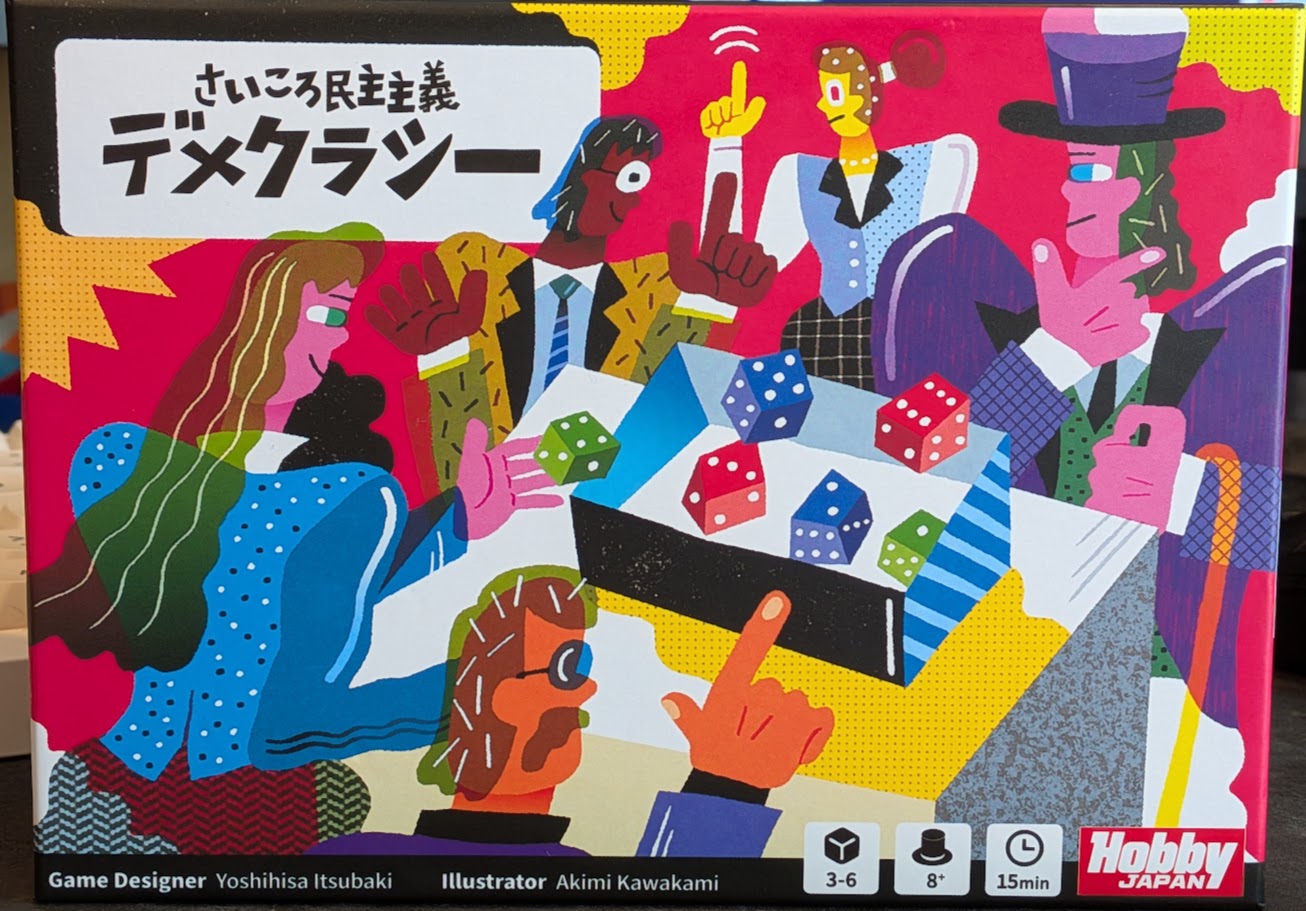Punchboard’s Japanese game festival (日本のゲーム祭り) continues with another light game, this time from the folks at Hobby Japan. Their new game, Guessocracy: Roll & Vote, is a clever game of observation and guesswork. It’s a really tactile experience that hits nicely with pretty much anybody who doesn’t have some kind of visual impairment.
Explaining Guessocracy is really easy. There are a bunch of transparent dice of different colours and sizes. They’re rolled with a gloriously stuffed fistful of clackiness, then you throw the included silky cloth over the top. Whoever has the role for the current round lifts the cloth and counts to three. In that fleeting time, those precious three seconds, you have to scan your eyes over the cubic mess in the box and try to figure out two things simultaneously:
- Which dice face was there the most of, and
- Which dice face was there the least of (excluding those that weren’t rolled at all)
Every player does this and marks the numbers for 1 and 2 above on their dials secretly. This is where the clever, and often hilarious, bit comes in.
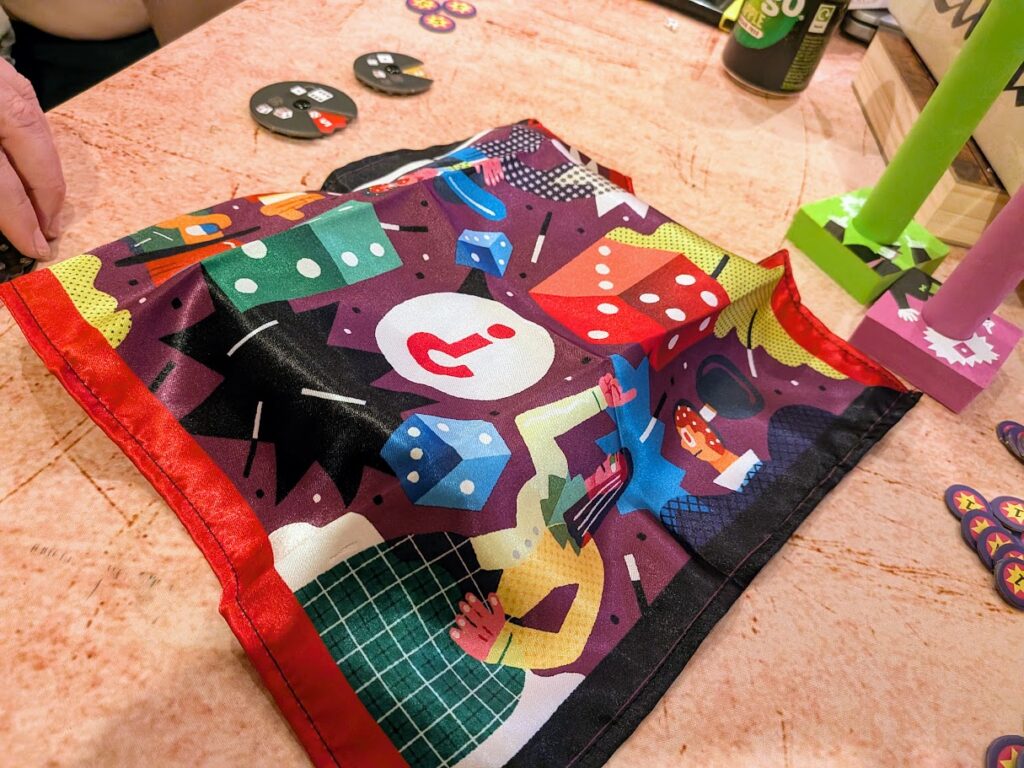
The players who get the points are not necessarily those who get the answers right. In fact, by default, the cloth is never even removed from the top of the box, so you never know the correct numbers. Let’s say, for the sake of example, that you’re playing with four players. Three of you set your majority dial to ‘5’, and the other person set it to ‘4’. The players who voted with the majority – i.e. ‘5’ – all get points. It doesn’t matter if ‘4’ was the correct answer. Democracy and the popular vote win.
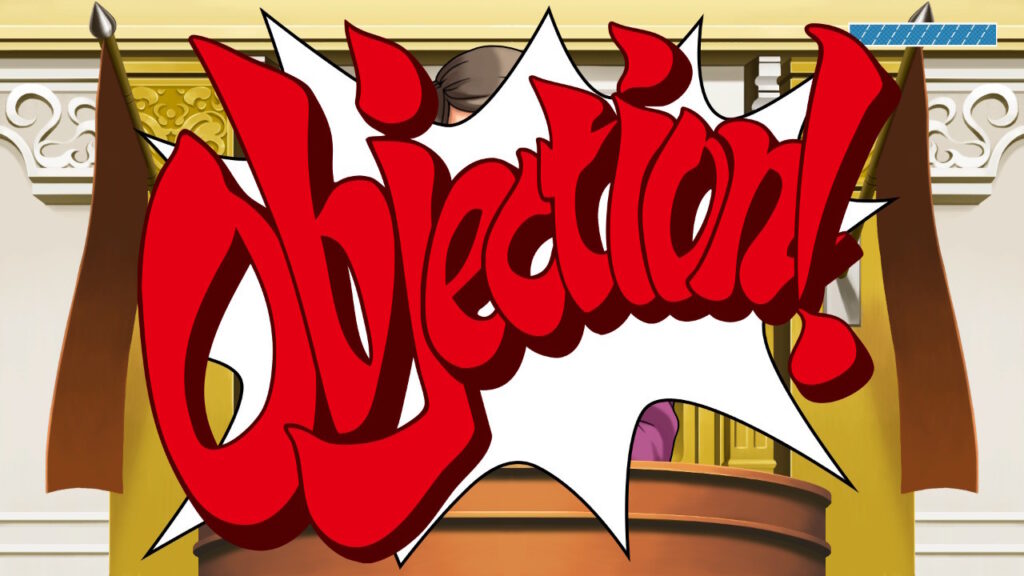
Hold your horses, sonny Jim. When you play, it won’t escape your attention that there are two big foam gavels on the table. If you think either popular vote is wrong, you grab the corresponding gavel/stamp and slam it down on the table in an act of defiance. When this happens, you take the cloth away and see which face value actually appeared the most (or least). If the player who was in the minority and called the check turns out to be right with their objection, some interesting stuff happens.
The player who called the objection gets a point. All the players who voted for the wrong number lose a point. Every player who had voted for the actual correct number gets a number of points equal to the number of dice that showed the correct number. It can be a huge boost, which means the temptation to raise an objection can be massive, so you’d better be super sure you’re right before to grab the stick.
Final thoughts
That’s really all you need to know about Guessocracy, and from what I’ve told you above, you probably already know whether it’ll be a fit for your group. I’ve played it with complete strangers at a convention, with the Japanese staff manning the stand at UK Games Expo, with my family, and with friends. Universally, everyone involved has had a good time. That doesn’t guarantee it will land with your group, but it’s an example of the wide appeal.
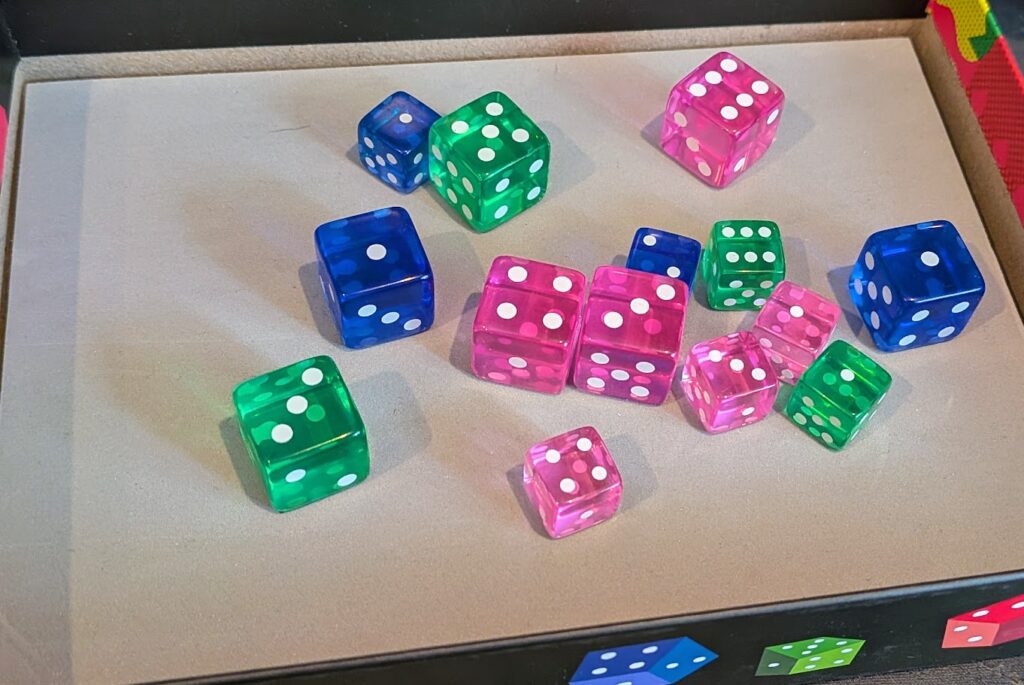
I think the biggest difficulty the Guessocracy has is that the description of how the game works can create some difficult language. On the big dial, you need to find the biggest number that there’s the most of (larger numbers break ties). So you need the highest number of dice with the highest number, and when it comes to resolving the vote, you’re looking for the value that’s chosen the most. It’s a lot of maximal language, and it can be confusing. My advice is to play an example round without the cloth to demonstrate the way it works. After that, you’ll be flying.
Yet again, we’ve got another unique, light, ice-breaker of a game from a Japanese studio, which feels familiar but is unlike anything else. Great fun.
RULES: At the time of writing, it’s impossible to find a copy of the Guessocracy rules in English without a direct link from the publisher. I’ve uploaded a copy here – Guessocracy English Rules PDF.
How to buy it
Guessocracy releases in Japan in July. At the time of writing Hobby Japan are still looking for overseas distributors.
Enjoying this article? Consider supporting me.
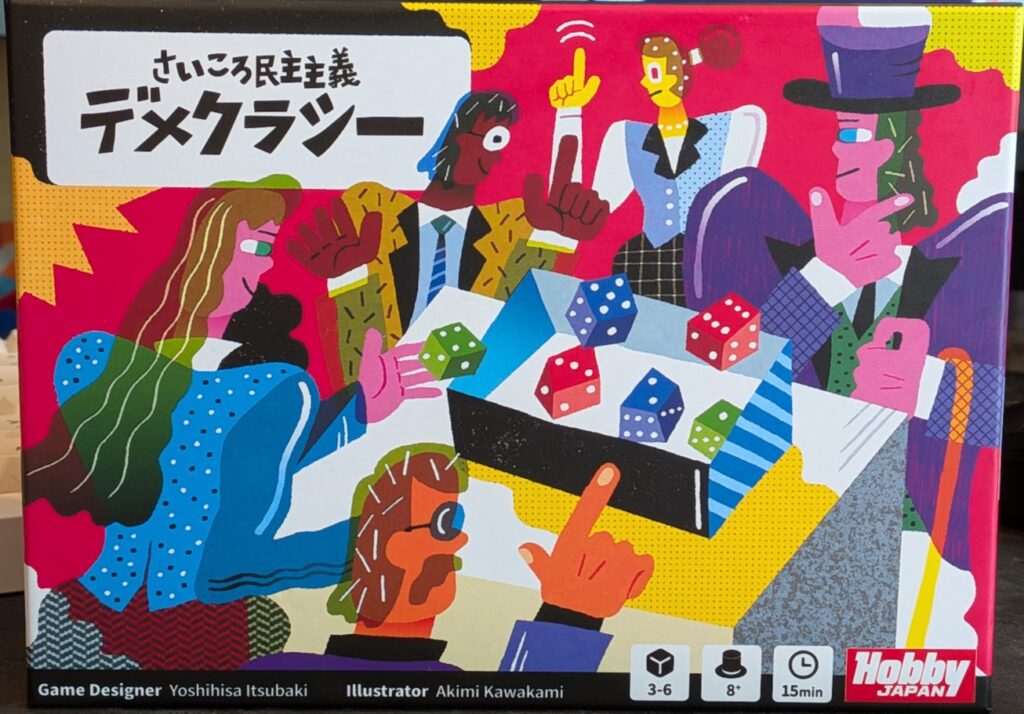
Guessocracy: Roll & Vote
Design: Yoshihisa Itsubaki
Publisher: Hobby Japan
Art: Akimi Kawakami
Players: 3-6
Playing time: 15 mins
